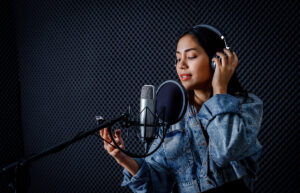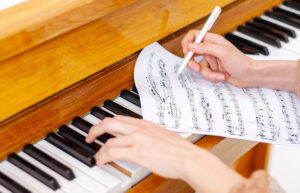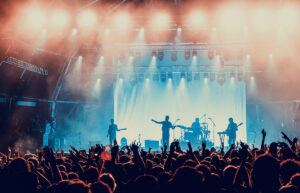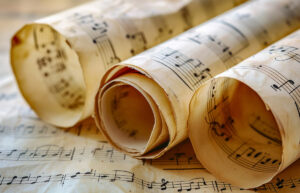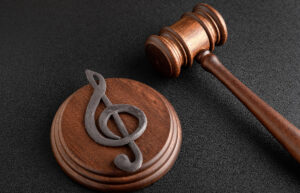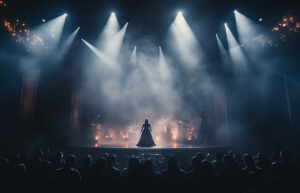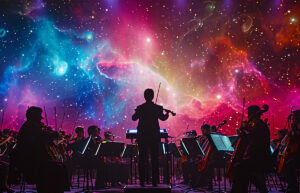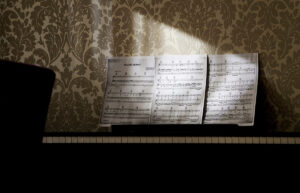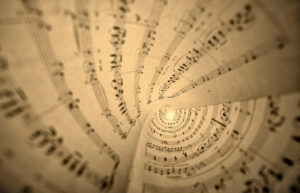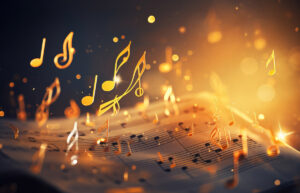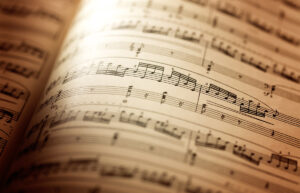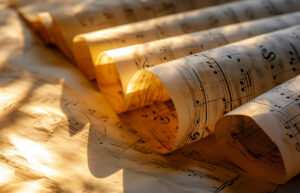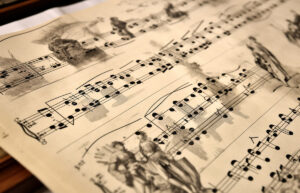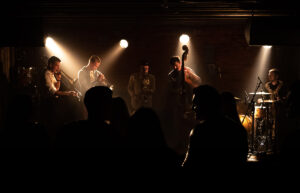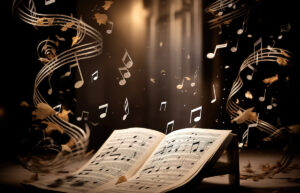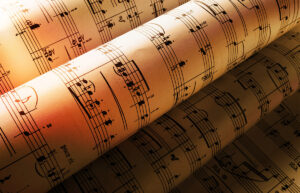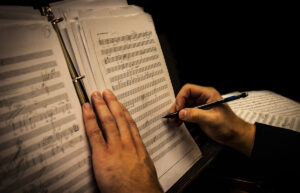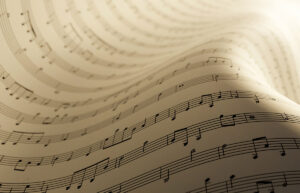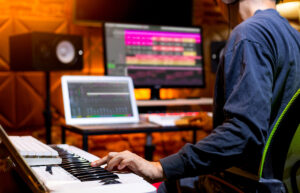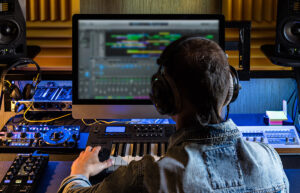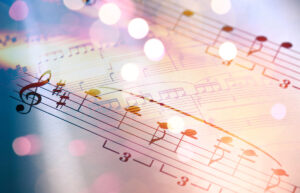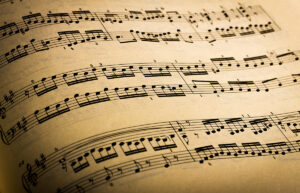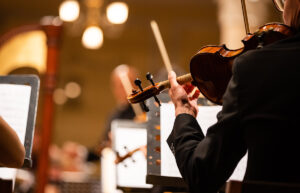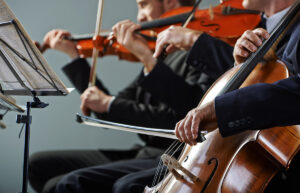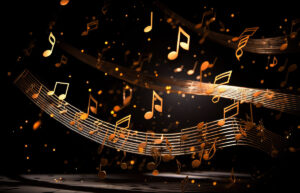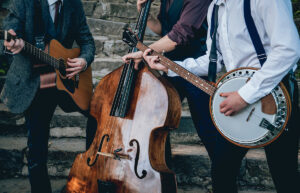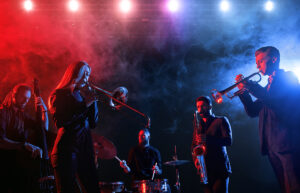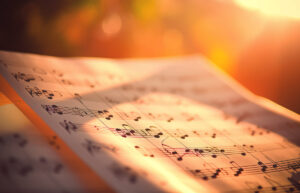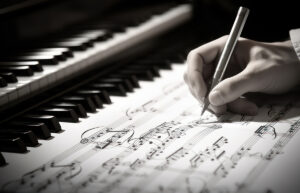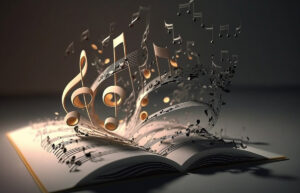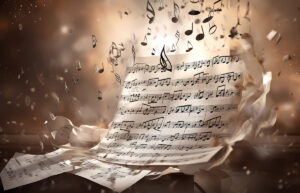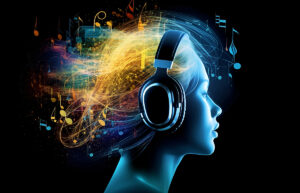What is Program Music? Meaning, History, Artists & Examples

Step into the captivating realm of program music, where musical notes cease to be mere sounds and instead unfold into vibrant narratives. Envision music not only as a melody but as a story that comes to life through your ears, crafting landscapes, characters, and emotions through the language of sound. In this article, we’ll embark on an immersive journey to uncover ‘what is program music.’
Delve into its historical roots and modern expressions, discovering how composers intricately weave stories, emotions, and imagery into their compositions using the language of musical codes. Join us on this journey as we decode the symphony of narratives, showcasing how program music elevates beyond conventional notes, inviting you to a world where imagination converges with harmonies.
Welcome to TheDemoStop, now join the community!
Connect with artists, fans and producers around the world.
What is program music?
Program music is a distinct genre within classical music that seeks to portray extra-musical concepts, encompassing narratives, landscapes, emotions, or specific events, through instrumental sounds. In contrast to absolute music, which focuses solely on musical structures without a designated narrative, program music aims to evoke imagery or tell a story through its musical expressions.
Composers employ diverse elements such as melodies, harmonies, rhythms, and instrumental timbres to convey particular scenes or emotions, often supplementing their compositions with titles or descriptive text to guide listeners’ interpretations. To grasp the essence of what is program music, explore renowned works like Vivaldi’s “The Four Seasons,” Mussorgsky’s “Pictures at an Exhibition,” or Strauss’s “Also Sprach Zarathustra.”
History of program music
Program music evolved significantly during different musical periods, with each era contributing distinct styles and approaches to this genre.
Renaissance Period: During this period, a shift occurred in the music landscape, with instrumental compositions gaining prominence alongside vocal pieces. Although there wasn’t a deliberate focus on programmatic storytelling, there were early indications of the emergence of descriptive music. The focus, however, remained on vocal works and the concept of what is program music was not yet fully defined as a genre.
Baroque Period: As music continued to evolve, Baroque composers infused instrumental compositions with more descriptive elements. Works like Heinrich Biber’s “Mystery Sonatas” and Jean-Phillippe Rameau’s “Pieces de clavecin en concerts” hinted at specific scenes or emotions. Despite elements suggestive of narratives or imagery, the notion of program music as a distinct genre was still in its early stages.
Classical Era: The Classical period prioritized absolute music, emphasizing structural clarity and form. While some compositions hinted at programmatic intentions, explicit storytelling or narrative-driven music wasn’t the primary objective. Examples include Haydn’s “The Representation of Chaos” in “The Creation” or Beethoven’s “Pastoral Symphony.”
Romantic Period: The Romantic era saw a significant rise in questioning what is program music. Composers sought to express emotions and vivid imagery, embracing the idea of composing explicitly narrative-driven works. Hector Berlioz’s groundbreaking “Symphonie fantastique” and Richard Strauss’s tone poems, like “Don Juan” and “Also Sprach Zarathustra,” exemplify this era’s emphasis on using music to tell stories or evoke specific scenes.
Twentieth Century: In the 20th century, music underwent immense experimentation and diversification. Composers explored avant-garde techniques, often incorporating programmatic concepts in innovative ways. Stravinsky’s ballet “The Rite of Spring” and Olivier Messiaen’s evocative “Quartet for the End of Time” continued the tradition of integrating programmatic elements while pushing the boundaries of musical expression.
Importance of program music
The significance of program music lies in its ability to engage, resonate, and create a more profound impact on listeners by offering a narrative or emotional context, thereby enhancing interest, memorability, emotional connection, and fostering loyalty and buy-in among audiences. The importance of what is program music lies in the following:
Boosting Interest: Program music captivates audiences by presenting narratives or emotions, attracting listeners beyond musical appreciation.
Increasing Memorability: Its association with stories or concerts enhances memorability, making compositions more distinct and memorable.
Evoking Existing Sentiments: By representing feelings or scenes, program music deeply resonates with listeners, creating emotional connections.
Building Loyalty: Music tied to narratives fosters deeper connections, enhancing loyalty among audiences and creating stronger brand associations in marketing.
Characteristics of program music
Want to understand what makes program music so relatable and heart-touching? Let us find out!
Poem
Program music resembles a poem with its condensed expression of emotions or narratives within a limited musical space, using musical elements to evoke vivid imagery or moods concisely.
Short Story
Similar to a short story, program music presents a clear narrative or theme within a relatively concise musical structure, often portraying a scene or emotion with a distinct beginning, middle, and end.
Novel
In some instances, program music can be expansive like a novel, offering a larger canvas for storytelling. It might feature interconnected sections or movements, exploring multiple themes or emotions in a more extensive manner.
Examples of program music
“Four Sea Interludes” by Benjamin Britten
This orchestral suite, extracted from Britten’s opera “Peter Grimes,” vividly portrays scenes of the sea. Comprising four distinct interludes- “Dawn,” Sunday Morning, “Moonlight,” and “Storm,” each section captures the varying moods and elements of the sea, depicting its tranquility, shimmering beauty, and powerful tempestuousness through evocative orchestration and melodies.
“Rodeo” by Aaron Copland
“Rodeo” is a ballet scored by Copland, illustrating the American West and cowboy culture. The music captures the energy, spirit, and excitement of a rodeo through lively rhythms, memorable melodies, and a blend of folk-inspired tunes. It embodies the vibrant and spirited atmosphere of the rodeo arena, reflecting the enthusiasm and ruggedness of the American frontier.
“Symphony No. 9” by Antonin Dvorak
Dvorak’s Ninth Symphony, often subtitled “From the New World,” incorporates programmatic elements inspired by his time in America. While it’s a symphony in form, its thematic content evokes impressions of the American landscape and Native American melodies. The symphony captures a sense of longing, nostalgia, and the diverse cultural influences Dvorak encountered during his American sojourn.
“An American in Paris” by George Gershwin
Gershwin’s orchestral composition “An American in Paris” is a musical portrayal of a tourist’s experiences in Paris during the 1920s. The piece vividly depicts the bustling streets, romantic ambiance, and lively city atmosphere through its jazzy rhythms, colorful orchestration, and melodic themes, creating a musical travelog that captures the essence of Parisian life.
“Carnival of the Animals” by Camille Saint-Saens
Saint-Saens’ whimsical suite “Carnival of the Animals” is a musical menagerie featuring a variety of animals depicted through charming melodies and playful orchestrations. Each movement portrays a different animal, from graceful swans to lumbering elephants, utilizing music to illustrate their characteristics humorously and imaginatively.
Welcome to TheDemoStop, now join the community!
Connect with artists, fans and producers around the world.
Program music artists
Edmund Angerer
Edmund Angerer is an Austrian composer and conductor known for his orchestral and chamber music compositions. His works often incorporated programmatic elements, capturing moods, scenes, or stories within his musical pieces. While not as widely recognized as some other composers, Angerer’s compositions demonstrate a keen sense of storytelling through music, blending emotive melodies and evocative harmonies to convey imagery or narrative themes.
Charles Ives
An American modernist composer, Charles Ives, employed programmatic elements in some of his compositions. He was known for experimenting with unconventional musical techniques and incorporating elements from American folk tunes and everyday sounds into his music. In pieces like “Three Places in New England,” Ives aimed to evoke specific scenes and impressions of rural New England landscapes, infusing his compositions with vivid imagery and emotions tied to his experiences.
Sir Edward Elgar
Sir Edward Elgar, an English composer, is renowned for his orchestration mastery and ability to convey emotions and landscapes through music. His “Enigma Variations” and “Pomp and Circumstance Marches,” particularly the famous “March No. 1”, exhibit elements of program music. These compositions subtly depict specific characters, emotions, or events, inviting listeners to interpret the hidden messages or identities behind the musical themes.
Edvard Grieg
Renowned for infusing his music with Norwegian folk melodies and landscapes, Norwegian composer Edvard Grieg showcased his skillful orchestration and use of folk tunes in works like “Peer Gynt.” Though not exclusively associated with program music, these compositions captured the essence of Henrik Ibsen’s dramatic poem, offering vivid musical depictions of the Norwegian countryside and folklore.
Arnold Schoenberg
Arnold Schoenberg, an Austrian composer and a key figure in the evolution of atonal and twelve-tone music, ventured into programmatic ideas in certain compositions. While renowned for his contributions to atonality and serialism, pieces like “Verklarte Nacht” (Transfigured Night) showcase narrative and emotional elements. Schoenberg’s exploration of tonal expressionism and thematic development in these works adds a programmatic dimension to his repertoire.
Conclusion
What is program music?
Program music is a genre in classical music that utilizes instrumental sounds to tell stories, depict scenes, or convey emotions. It aims to represent extra-musical ideas through musical compositions.
History of program music
The evolution of program music in classical music involves the representation of non-musical concepts, such as stories, emotions, or scenes, through instrumental sounds. This genre developed over centuries, gaining prominence during the Romantic era and continuing to evolve into the 20th century, with various composers exploring its possibilities.
Importance of program music
Program music holds significance by engaging listeners through narrating stories, evoking emotions, or depicting scenes using music. It enhances interest, memorability, emotional connections, and loyalty among audiences.
Characteristics of program music
- Poem
- Short story
- Novel
Examples of program music
- “Four Sea Interludes” by Benjamin Britten
- “Rodeo” by Aaron Copland
- “Symphony No. 9” by Antonin Dvorak
- “An American in Paris” by George Gershwin
- “Carnival of the Animal” by Camille Saint-Saens
Program music artists
- Edmund Angerer
- Charles Ives
- Edward Elgar
- Edvard Grieg
- Arnold Schoenberg
FAQs
What is program music?
Program music is a classical music genre that explicitly aims to convey stories, depict scenes, or evoke emotions through instrumental sounds, providing explicit narrative or descriptive content to the music.
What is the history of program music?
Program music emerged in classical music as a means to depict non-musical ideas, stories, or emotions through instrumental compositions. Its development peaked notably during the Romantic era, and it continued to evolve across different musical periods, influencing how composers narrate, depict, and evoke emotions through music.
Who invented program music?
The evolution of program music involved various composers and periods, gaining prominence notably during the Romantic era. Composers like Hector Berlioz and Franz Liszt made significant contributions to its development.
When did program music evolve?
Program music began evolving notably during the 19th-century Romantic era. Composers sought to explicitly depict narratives, emotions, or scenes through instrumental compositions, leading to its prominence.
How did program music evolve in the Renaissance period?
While not fully developed, program music in the Renaissance period showed early signs of descriptive instrumental music. Some composers hinted at portraying specific emotions or scenes, laying the groundwork for future developments in musical expression.
What was program music in the Baroque period?
In the Baroque period, composers started infusing descriptive elements into instrumental music. Though not fully developed as a distinct genre, some works hinted at portraying emotions, scenes, or stories through music, setting the stage for future advancements in programmatic expression.
What is the importance of program music?
Program music is significant because it draws viewers in by telling tales, eliciting feelings, or depicting situations musically. This increases audience interest, memorability, emotional ties, and loyalty.
What are the characteristics of program music?
Characteristics of program music include its narrative quality, intent to depict specific stories, emotions, or scenes through instrumental sounds, and the use of titles or descriptive texts to guide listeners’ interpretations.
What are the examples of program music?
- “Four Sea Interludes” by Benjamin Britten
- “Rodeo” by Aaron Copeland
- “Symphony No. 9” by Antonin Dvorak
- “An American in Paris” by George Gershwin
- “Carnival of the Animal” by Camille Saint-Saens
Who are the famous program music artists?
- Edmund Angerer
- Charles Ives
- Edward Elgar
- Edvard Grieg
- Arnold Schoenberg



